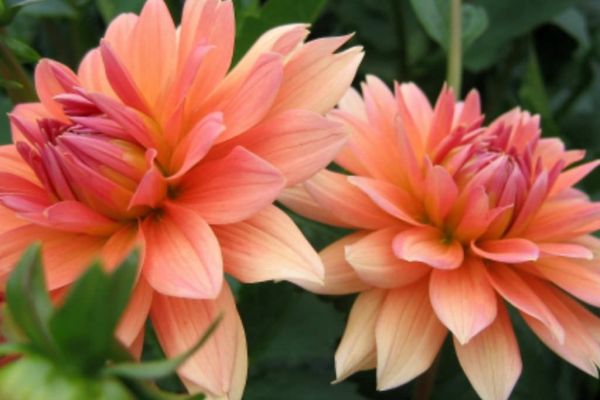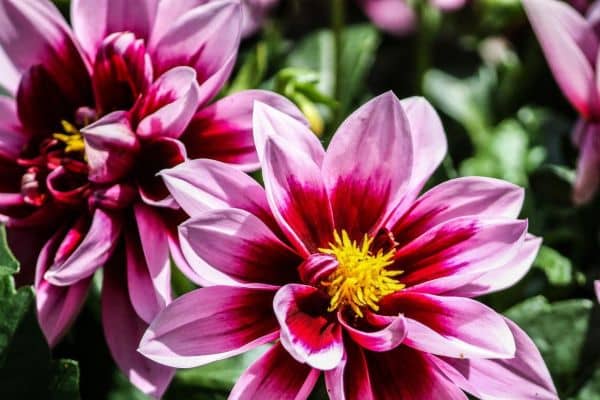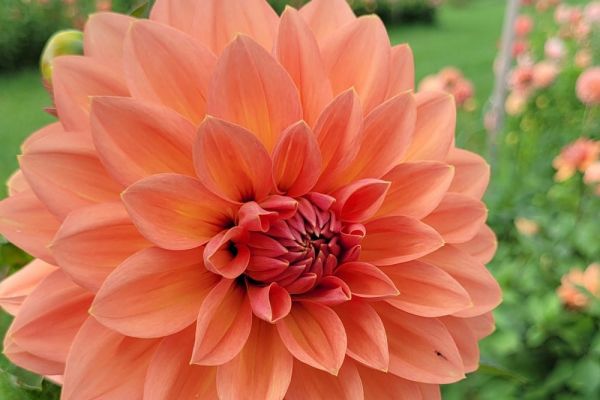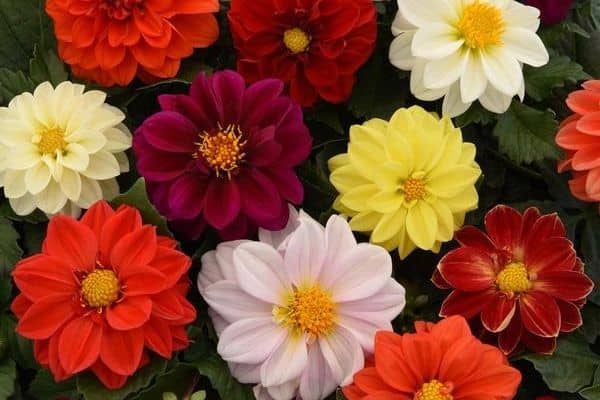Dahlia Pinnata is a scientific name of Dahlia and it is also known as garden dahlia or Dahlia spp. They also bloom flowers that come in every color of the rainbow and will do great in your garden.
Here are some points on When to Plant Dahlias Dahlias, How to Plant Dahlia Pinnata, and Growing Dahlias in Containers that you can apply in your garden and house:
When to Plant Dahlias Dahlias
- Dahlia Pinnata is not a cold soil-tolerating plant so before planting remember to plant them after any danger of frost has passed and 60 degrees Fahrenheit or 15 degrees Celcius.
- The best rule of thumb while planting them is to plant them a few days after tomatoes are planted in the ground.
- You can also use tubers indoors in containers a month ahead to get a jump on the season and get the settled planted during the season.

How to Plant Dahlia Pinnata
- First, you should avoid getting tubers that appear wrinkled or rotten as pink “eyes” (buds) or a little green growth are good.
- You should plant large dahlias free from competition from other plants so plant them in a dedicated plot.
- Remember to plant them in spacing 3 feet apart in a row but if you plant them 1 foot apart they can support each other and make an excellent flowering hedge.
- For medium to low-height dahlias, you can plant them with other summer plants 2 feet apart as medium to low-height dahlias are usually 3-foot tall,
- For grown from seed or smallest bedding dahlias you should plant them 9 inches to 12 inches apart.

- Then you can dig a hole 6 inches to 8 inches deep to plant them but remember not to use fertilizer but to use compost and a handful of bonemeal.
- Then you can set a tuber eyes facing up in the hole.
- Also, remember that tubers should not break or cut.
- Then you can just cover the tuber with 2 inches to 3 inches of soil.
- After you cover the tuber remember not to water the as it may cause it to rot. You can water them after the sprouts have appeared above the soil.
- After the steam and sprouts grow then you can fill it with soil till grows label.
- Also, you should not use andy mulch for Dahlia Pinnata plants as they prefer sun on their roots.
- After 8 weeks of planting Dahlia Pinnata will bloom flowers and for large-flower, you should place 5-foot to 6-foot stakes around plants to help them grow well.

Growing Dahlias in Containers
- When planting Dahlia Pinnata in containers the container should be good drainage and big enough.
- A container with 12*12 inches will do the work.
- You can use co-polymer moisture-retaining crystals and soilless mix for them.
- Use a soilless mix and co-polymer moisture-retaining crystals, per the package’s guidance.
- Then you can dig a hole 6 inches to 8 inches deep to plant them
- Then you can set a tuber eyes facing up in the hole.
- Also, remember that tubers should not break or cut.
- Then you can just cover the tuber with 2 inches to 3 inches of soil-crystal mix.
- Then you can spray the water until growth starts if necessary.
- Always remember not to damp the soil 1 inch below the surface.
- Then you can add fertilizer in summer as the fertilizer description.
- If the root of Dahlia Pinnata gets exposed you can add some soil to cover it.
Also Read: Orange Delight: 10 Trees That Bloom Stunning Orange Flowers
